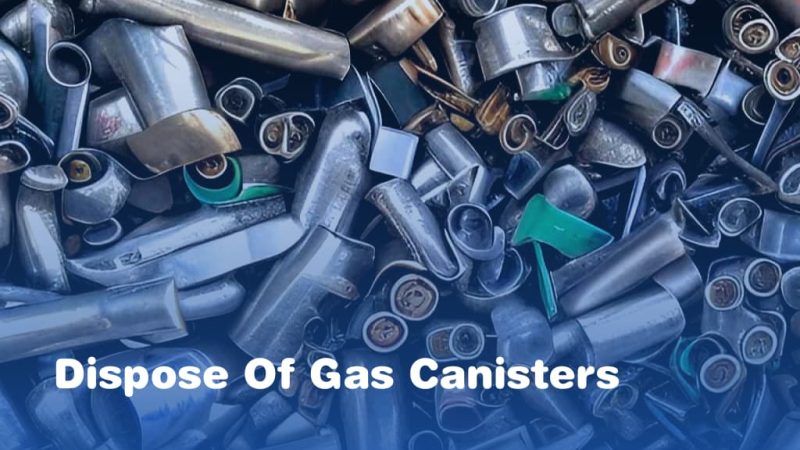1. How to dispose of gas canisters
Who doesn’t like whipped cream on their desserts? Almost everyone says yes to this question but do you know that a key ingredient in making whipped cream is Nitrous Oxide sometimes also called the ‘laughing gas’.
If you are looking for an easier way to garnish your desserts with whipped cream, look no more and jump right into nitrous oxide canisters and a pressure regulator.
Not only is it used in whipped cream, but is also used clinically as a safe anesthetic and has an anti-anxiety effect.
But what about the disposal of such canisters once they are used? These canisters are pressurized and must be disposed of correctly to avoid accidents.
When it comes to disposing of N2O canisters, there are a few things you need to keep in mind. Also, depending on the country you are in, the regulations for disposal might differ slightly.
In general, however, there are a few key points to remember when disposing of N2O canisters. In this article, we will go over what you need to know about disposing of N2O canisters.

2. Make sure you remove all the remaining gas in the canisters through the nozzle
Once the canister is completely used, it can be disposed of. Starting with the disposal, you need to make sure that the canisters are all empty to avoid an explosion and harmful consumption of released chemicals. Once you are sure the canister is empty, you can proceed to the next step.
3. Do not puncture, incinerate, or store N2O canisters near flammable materials
Nitrous oxide is stored in high-pressure storage vessels in canisters, filling the gas by weight. If you puncture the canister, the gas may leak out and could explode because of the combustion process and this may cause serious injury. Taking these canisters to a certified recycling center is also very important.
We recommend that you do not incinerate the canisters as this could release harmful toxins into the environment. This also goes for storing the canisters near flammable materials – it’s just not worth the risk because although nitrous oxide is a nonflammable gas it can cause combustion and can cause fires.
4. Do not dispose of N2O canisters in regular trash
The third thing to remember is that you should refrain from disposing of N2O canisters in the regular trash. This is because they are pressurized and need to be disposed of specially. Never put N2O canisters in the trash – always take them to a certified recycling center.
5. Follow the local, state, and federal regulations for disposing of N2O canisters
Each country has its regulations when it comes to disposing of N2O canisters. Make sure you are familiar with the regulations in your country before disposing of the cylinders. Generally, the rules are the same so if you find nitrous oxide canisters, call the recycling centers and tell them you found a Nitrous oxide canister and tell them if it is made up of steel or aluminum. They will then take proper steps to ensure its disposal.
So, when you know you need to dispose of the N2O canister, keep the above-mentioned things in mind. Now, let’s move on to the steps you need to take.
6. Carefully dispose of the metals
When sending popular aluminum canisters to a recycling company, the canisters must be completely emptied with valves removed. To do this, the cylinder is placed in a vise and using a special tool with some elbow grease, the valve can be removed.
Once the valve is removed, most recycling companies require the canisters to be cut in half.
7. Recycle the canister
The final step in disposing of N2O canisters is to recycle the metal can. Most recycling centers will accept metal cans; this includes whipped cream canisters. To recycle the can, simply place it in your recycling bin. You can usually find a recycling center near you if you don’t have a recycling bin.
No matter how many times you recycle metal cans, the quality will not be degraded. This means that recycled metal or steel can be used to make new metal cans over and over again.
That’s it! By following these simple steps, you can help to reduce the amount of waste that goes into landfills.

